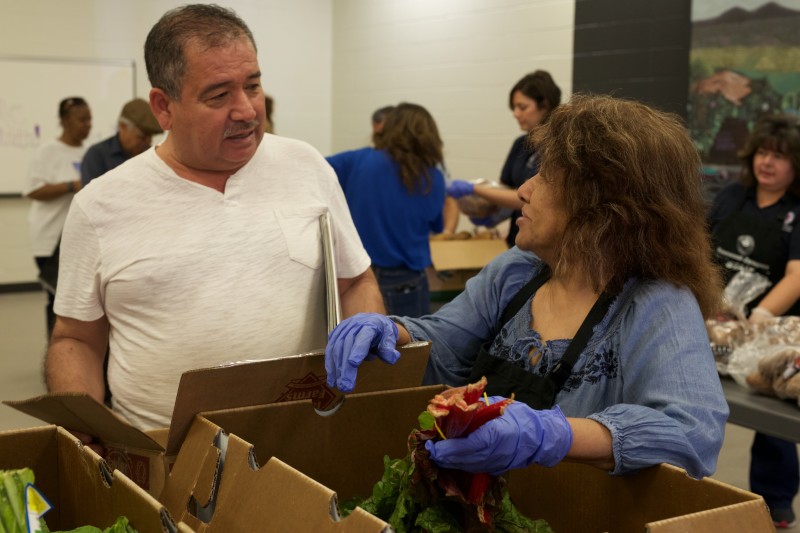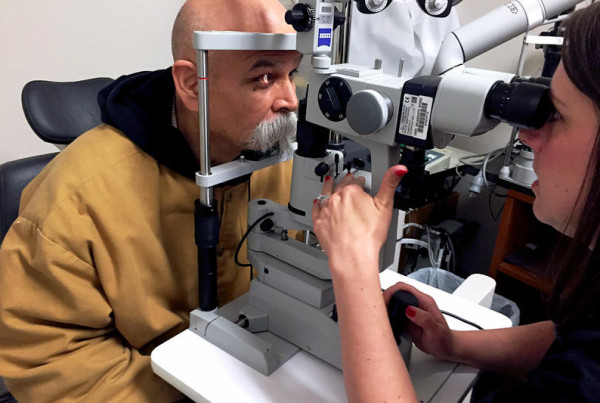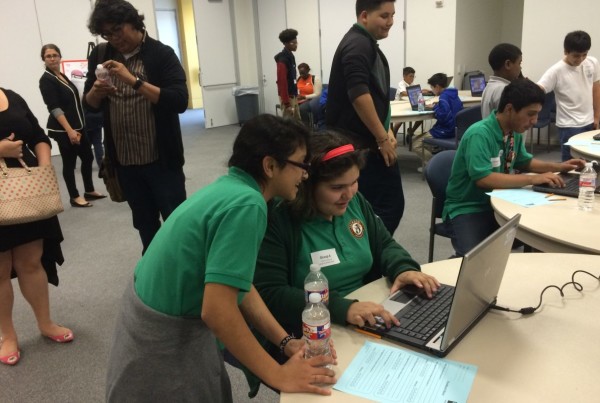In the late 1800s and early 1900s, most low-income, black and Hispanic people were segregated to the east side of what is now IH-35 in Austin. Now, the same people who’ve lived in the area for decades are being pushed out. Old houses are torn down to make way for new ones and property taxes are rising rapidly.
Allen Washington runs a program aimed at getting fresh food to the affected low-income families.
“Gentrification always changes the landscape, and so as the fancy restaurants are established, people in the area who have been here for years – some of them aren’t able to deal with the new changes,” Washington says. “A lot of them are moving further out and further south, or further east, to accommodate these new changes. And as they move further out they’re moving to what’s known as food deserts.”
About twenty percent of Texas is considered a food desert. That includes rural areas in west Texas and along the border – but also areas inside some of the state’s largest cities.
The whole of Dallas County has fewer supermarkets per capita than most large U.S. cities. One report says Houston needs 185 more supermarkets to meet population needs.
Dr. Kim Avila Edwards is a pediatrician for Austin Regional Clinic. She’s mapped food deserts and childhood obesity in East Austin.
“A family in Manor very honestly told me that they were a one-car family and their grocery store was literally having to walk down a busy highway,” Dr. Edwards says. “There was no way they could do that. So their option was either a gas station with their Quickie Mart or the Dollar General.”
That’s not the only source of food in these areas, but the alternative is even less healthy.
Shannon Jones is the Director of the Austin/Travis County Health and Human Services Department, which manages the city and federally-funded Fresh Foods for Families program.
“What we see is that in the new areas that are developing, gradually but slowly, the fast food industry is moving food locations into those areas,” Jones says. “Folks are having limited options. They all go to the fast food restaurants, get their children – unfortunately – filled up on those foods, and what we’re seeing is the issue of obesity.”
As many as 250 people line up each month for the fresh food program in East Austin.
Some walk from their houses right down the street, others bus or drive from areas outside the city limits. All they need is a personal ID and a couple of reusable bags to get fresh, locally grown produce to take home.
Joaquin Blanc lives 15 minutes away. He’s bringing food back for his wife and five children. When the doors to the center’s gym open at nine, Blanc will walk through the assembly line with his bag open. Today’s menu: onions, potatoes, chard and lettuce.
“En realidad es un gran recurso de la comunidad que nos permite comer mejor y nos permite pues hacer que el presupuesto limitado que tenemos – que es mi unico ingreso – pues nos alcance para tener una buena comida,” Blanc says.
“It truly is a wonderful community resource. It allows us to have better meals and – you know – I’m the only provider in the family – so our budget is tight – but with this we can actually have good (healthy) meals.”
Dr. Avila Edwards says there should be more community programs like Fresh Food for Families because communities without access to healthy food face problems related to obesity.
“Both of these issues necessitate community action, not just individual, not just physicians not just local planners,” she says. “But it’s the community at large – embracing our neighbors, embracing our children who are our future, to give them the best start is something we should all aim for.”















